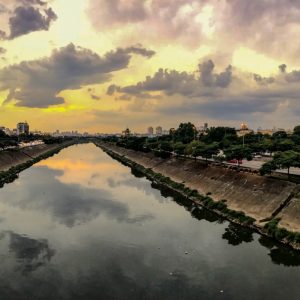The Stream, January 3: Experts Warn Gaza Strip May Be Uninhabitable by 2020 Due to Water Crisis
The Global Rundown
The Gaza Strip may become uninhabitable next year due to a devastated water supply, experts warn. Nearly half of wells in southwest Wisconsin are contaminated by bacteria or chemicals, a study finds. Melting of glaciers in the “third pole” threatens Asia’s water supply. Researchers study the long-term impacts of conservation tillage on a lake in Ohio. The Maryland Board of Public Works votes against a proposed natural gas pipeline, citing environmental concerns.
“Marylanders and many of their leaders have consistently opposed the threats fracked gas pipelines pose to our health, water, climate, and communities.” –Josh Tulkin, chapter director of the Sierra Club Maryland, in reference to the rejection of a proposed pipeline. The TransCanada pipeline would have carried natural gas from Pennsylvania to West Virginia, with a section running under the Potomac River in Maryland. The state’s Board of Public Works vetoed the proposal due to environmental concerns. The New York Times
Latest WaterNews from Circle of Blue
Photojournalist’s Notebook: São Paulo’s Portelinha Favela — Those living in Portelinha are among the roughly 40 percent of the world’s population that are affected each day by water scarcity and pollution.
Photojournalist’s Notebook: São Paulo’s Wastewater — Despite new expansion efforts, wastewater treatment in São Paulo remains woefully inadequate.
By The Numbers
10 percent Proportion of the Gaza Strip’s two million residents that have access to safe drinking water. Currently, 97 percent of Gaza’s freshwater is unfit for human consumption, and the territory dumps 110 million liters of raw sewage into the Mediterranean each day. Experts warn that Gaza may be uninhabitable by 2020 due to the region’s water crisis. PBS Newshour
In context: Spotlight on the Water Crisis in Gaza.
42 percent Proportion of wells in southwest Wisconsin that are contaminated with toxic bacteria or chemicals, according to the first systematic study of well water in the region. Researchers are unsure what is causing the high pollution rates, but believe agricultural waste or faulty septic systems may be to blame. Wisconsin State Journal
Science, Studies, And Reports
For 25 years, farmers around Acton Lake in southwestern Ohio have practiced “conservation tillage,” an agricultural method that can reduce sediment runoff. Scientists at the American Society of Agronomy tracked concentrations of sediment and other elements from 1994 to 2014, and found that the tillage method cut sediments levels in the short-term, but was less effective over the entire 20-year study period. In the long-term, researchers also noted a long-term drop in nitrogen and rise in phosphorus levels. Science Daily
On The Radar
Glaciers in the “third pole”–the largest reservoir of ice and snow aside from the Arctic and Antarctic–have been shrinking for the last 50 years, data shows. Snowmelt from the third pole, which encompasses the Himalaya–Hindu Kush mountain ranges and the Tibetan Plateau. plays a key role in water supply for nearly a fifth of the world’s population. Experts say closer monitoring and a better understanding of melting in the region are crucial to avert a water crisis throughout much of Asia. Nature

Kayla Ritter is a recent graduate of Michigan State University, where she studied International Relations and Teaching English to Speakers of Other Languages. She is currently based in Manton, Michigan. Kayla enjoys running, writing, and traveling. Contact Kayla Ritter






Leave a Reply
Want to join the discussion?Feel free to contribute!